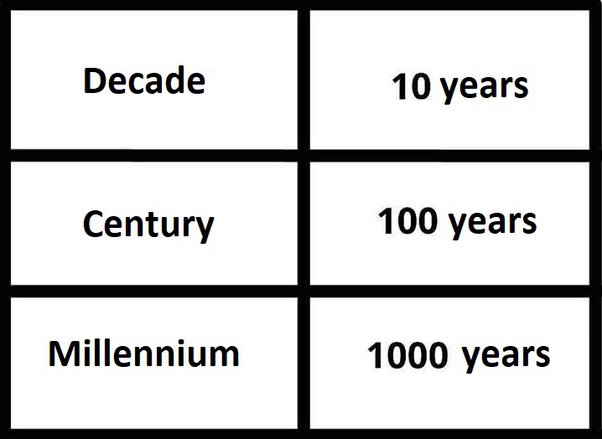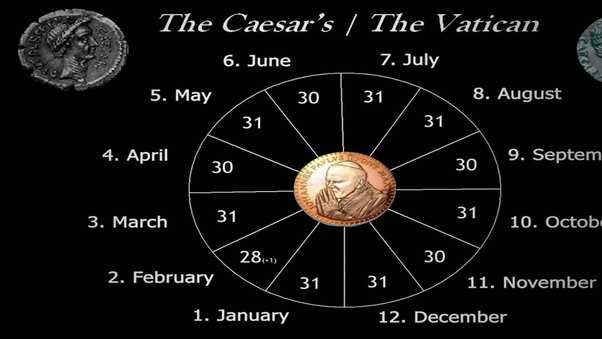How long is a decade? In this article, we’ll delve into the intricacies of a decade, exploring its significance, the changes it witnesses, and the lasting impact it can leave on various aspects of our lives. So, let’s embark on a journey through time and uncover the depth of what it truly means to experience a decade.

Have you ever stopped to consider just how much can change over the course of ten years? A decade, while seemingly a straightforward unit of time, holds within its span a multitude of transformations, milestones, and shifts that can profoundly shape the world.
From personal growth and technological advancements to cultural shifts and global events, the concept of a decade encompasses a remarkable journey through time.
Read Also: 500ML to OZ: How Many Ounces in 500Millilitres
Historical Significance of Decade
A decade is more than just a unit of time; it’s a meaningful segment of history that encapsulates a period of transformation, progress, and evolution. Each decade has carried its own unique significance throughout history, leaving an indelible mark on the world and shaping the course of events.
From political shifts and cultural revolutions to scientific breakthroughs and technological advancements, the historical significance of a decade is a reflection of the dynamic nature of human progress.
The passing of each decade brings about a sense of reflection and introspection, prompting us to look back on the changes that have occurred and the lessons that have been learned. It’s a reminder that time is both a witness and a catalyst for change and that the actions and decisions made during these ten-year spans can ripple through generations.
From the Roaring Twenties to the Information Age, we’ll uncover how each decade has left its imprint on politics, culture, society, and beyond. So, let’s embark on a journey through the past, examining the milestones and events that have shaped our world over the course of ten years.
Related: How Many Bottles of Water is a Gallon?
Events and Changes Often Occur Within a Decade, Such as Political Shifts, Technological Advancements, and Cultural Trends
Over the course of a decade, many events and changes unfold, shaping the world in subtle and profound ways.
From political landscapes to technological frontiers and from cultural trends to societal shifts, the span of ten years has the power to usher in transformative developments. Here are some common occurrences that often take place within a decade:

1. Political Shifts
Decades often witness significant political changes, with shifts in leadership, ideologies, and geopolitical dynamics. Elections, policy reforms, and international relations can undergo substantial transformations that reshape the global order.
2. Technological Advancements
The rapid pace of technological progress means that each passing decade introduces new innovations that revolutionize industries and societies. From the proliferation of smartphones to the rise of artificial intelligence, technology is a driving force of change.
3. Cultural Trends
Cultural trends, fashion, music, and art are in a constant state of evolution. Decades see the emergence of new artistic movements, shifts in popular culture, and the rise of icons that capture the spirit of the times.
4. Social Movements
Decades often bear witness to the rise of social and civil rights movements. These movements advocate for change, equality, and justice, sparking important conversations and driving societal transformation.
5. Environmental Awareness
Increasing environmental concerns often lead to significant shifts in attitudes and policies related to conservation, sustainability, and climate change action.
6. Economic Fluctuations
Economic cycles unfold over the course of a decade, with periods of growth, recession, and recovery affecting global economies and individual livelihoods.
7. Medical Breakthroughs
Medical research and healthcare advancements lead to the discovery of new treatments, therapies, and interventions that improve quality of life and extend human longevity.
8. Urban Development
Urban areas experience changes in infrastructure, architecture, and city planning that reflect evolving needs and preferences of residents.
9. Demographic Changes
Population trends, birth rates, and migration patterns can shift within a decade, influencing social dynamics and cultural diversity.
10. Communication Evolution
The way people communicate undergoes significant changes, from the rise of social media platforms to the evolution of communication technologies.
11. Educational Trends
Education systems and approaches to learning adapt to the changing needs of students and the demands of the workforce.
12. Global Events
Some decades are marked by extraordinary global events; such as the Olympics, World Expos, and international summits that bring together nations and cultures.
These are just a few examples of the myriad changes that can occur within a decade. The interconnected nature of these shifts underscores our world’s complex and ever-evolving nature as each decade paves the way for the next chapter in human history.
See Also: How Long Do Short People Live?
How Decades Serve as Markers for Shifts in Popular Culture, Fashion, Music, and Art
Decades serve as significant markers for shifts in popular culture, fashion, music, and art, reflecting society’s evolving tastes, attitudes, and sensibilities. Each decade carries its own distinct cultural identity, shaped by historical events, technological advancements, and societal changes.
Here’s how decades play a pivotal role in shaping these creative and expressive realms:
1. Cultural Icons and Trends
Each decade introduces cultural icons who become synonymous with the era. From Marilyn Monroe in the 1950s to Madonna in the 1980s and beyond, these figures embody the spirit of their time and influence fashion, beauty ideals, and cultural trends.
2. Fashion Evolution
Fashion is deeply influenced by each decade’s social, political, and cultural context. The 1920s brought flapper dresses and the Roaring Twenties style, while the 1970s embraced bohemian chic and disco glam. Fashion designers respond to these cultural shifts by creating garments that capture the essence of the times.
3. Musical Movements
Musical genres and styles change from decade to decade, reflecting the mood and aspirations of society. The rock ‘n’ roll of the 1950s gave way to the countercultural music of the 1960s, followed by the disco fever of the 1970s and the electronic beats of the 1980s. These musical shifts often parallel broader social changes.
4. Artistic Expressions
Art movements also ebb and flow with the passage of decades. The abstract expressionism of the 1950s, the pop art of the 1960s, and the postmodernism of the 1980s are all examples of how artists respond to the cultural ethos of their time through their creations.
5. Technological Influence
Technological advancements play a crucial role in shaping creative outputs. The rise of television in the mid-20th century, the advent of the internet in the 1990s, and the era of digital media in the 2000s have all significantly impacted the way culture, fashion, music, and art are consumed and produced.
6. Countercultural Movements
Decades often witness countercultural movements that challenge prevailing norms and values. The hippie movement of the 1960s and the punk subculture of the 1970s are examples of how counterculture influences artistic expression and challenges the status quo.
7. Nostalgia and Revivals
As time moves forward, certain decades become sources of nostalgia, leading to revivals of past trends and styles. This cyclical nature of fashion, music, and art ensures that elements of previous decades continue to influence contemporary culture.
8. Cultural Fusion
Decades are not isolated entities; they often blend elements from the past and present. Fusion of styles, known as retro-futurism, results in unique cultural amalgamations that pay homage to history while embracing the possibilities of the future.
In essence, decades serve as a canvas on which culture, fashion, music, and art are painted, reflecting the ever-changing tapestry of human expression. As each decade leaves its mark on these creative realms, it contributes to the rich and diverse cultural heritage that continues to inspire and shape generations to come.
See Also: How Many Steps in a Mile
Scientific Measurement of Time
The scientific measurement of time is a fundamental aspect of our understanding of the universe and the events that occur within it. Time, as a physical quantity, is measured and quantified using various scientific methods and tools, each with its own precision and significance.
From the atomic scale to cosmic phenomena, the measurement of time plays a crucial role in fields such as physics, astronomy, and technology.

1. Atomic Clocks
One of the most accurate methods of measuring time is through atomic clocks. These clocks are based on the vibrations of atoms, particularly caesium or rubidium atoms.
These atoms’ regular and predictable oscillations serve as a reliable timekeeping reference. Atomic clocks are used to define the International System of Units (SI) second, which is the primary unit of time.
2. Frequency and Period
Time can also be measured using the concepts of frequency and period. Frequency refers to the number of oscillations or cycles of a repeating event per unit time. On the other hand, a period is the time it takes for one complete cycle to occur. The relationship between frequency (f) and period (T) is given by f = 1/T.
3. Universal Time
Coordinated Universal Time (UTC) is a time standard used to regulate clocks and timekeeping around the world. It is based on International Atomic Time (TAI), which is derived from atomic clocks, and is adjusted periodically to account for the Earth’s irregular rotation.
4. Relativistic Effects
In the theory of relativity, time is not absolute but rather dependent on factors such as velocity and gravitational fields. Time dilation, as predicted by Einstein’s theory of special relativity, asserts that time passes more slowly for an object in motion relative to an observer.
5. Time Scales and Ephemeris Time
Ephemeris time (ET) is a time scale used in astronomy to describe the position of celestial objects. It accounts for the variations in Earth’s rotation and is replaced by the more accurate Barycentric Dynamical Time (TDB) for precise calculations.
6. Cosmic Events
Astronomical phenomena such as the rotation of planets, orbits of moons, and pulsation of stars provide natural cycles against which time can be measured. For instance, Earth’s rotation on its axis defines a day, and its orbit around the Sun defines a year.
7. Technological Applications
The measurement of time is essential for various technological applications, including satellite navigation, communication systems, and synchronized networks. For instance, the Global Positioning System (GPS) relies on precise timing to determine locations accurately.
The scientific measurement of time is not only a practical necessity for daily life but also a profound exploration of the nature of the universe. Our ability to measure time with ever-increasing accuracy allows us to unravel the mysteries of cosmic phenomena, investigate the intricacies of the quantum world, and develop technologies that shape the modern.
Related: How Long Is Chicken Good for in the Fridge? A Comprehensive Guide
Leap Years and Their Impact on the Length of a Decade
Leap years are an essential component of our calendar system, introduced to compensate for the fact that Earth’s orbit around the Sun is not precisely 365.25 days long. Instead, it’s about 365.2422 days long.
To accommodate this discrepancy, a leap year is added to the calendar every four years, except in cases where the year is divisible by 100 but not by 400.
The impact of leap years on the length of a decade is subtle yet significant. A standard decade comprises ten years, which would equate to 3,650 days (365 days × 10 years). However, the inclusion of leap years affects this total in a couple of ways:
1. Extra Days
Over the course of a 10 years time span (i.e., without any leap years), there would typically be 2 or 3 leap day occurrences (February 29th). Each leap day adds an extra day to the year, extending the total number of days in a decade.
2. Additional Hours
Leap years also account for the Earth’s orbit not being perfectly divisible into days. While a standard year has 365 days, a solar year is slightly longer. This discrepancy accumulates over time, leading to the need for an additional day.
This extra day in a leap year helps align the calendar year with the time it takes for the Earth to complete its orbit around the Sun. As a result, a decade with leap years would consist of more than 3,650 days. The specific number of extra days depends on the number of leap years within the duration of a decade.
Leap years are crucial for maintaining the accuracy of our calendar system and preventing significant drift over time. Without the inclusion of leap years, the calendar year would gradually fall out of sync with the astronomical year, leading to seasonal misalignment and confusion.
See Also: How Long is a Century, Decade, and Millennium?
Conclusion
In summary, while the concept of a decade remains rooted in counting ten years, the inclusion of leap years introduces variations in the total number of days within that decade. These subtle adjustments help ensure that our calendar remains closely aligned with the Earth’s orbit and the changing seasons.
The scientific measurement of time is a remarkable journey that encompasses both the tangible and the abstract, guiding our understanding of the universe’s rhythm and order. From the atomic precision of caesium clocks to the cosmic dance of celestial bodies, time serves as a thread weaving through the fabric of existence.
Its measurement is not only a practical necessity for everyday life and technological innovation but also a profound exploration of the fundamental nature of reality.
As we delve into the intricacies of time measurement, we uncover the interplay of relativity, the rhythmic pulses of atomic vibrations, and the synchronization of global systems. Time, while universal, is not absolute; it bends and stretches with speed and gravity, revealing the intricate web of connections that define our universe.
The precision of time measurement goes hand in hand with the marvel of human ingenuity. Our ability to measure time down to nanoseconds empowers us to navigate particle physics’s intricacies and unravel the cosmos’ mysteries. It underpins the functioning of global communication networks, satellite navigation, and the everyday devices that streamline our lives.
Read: 3 Fascinating Things About ‘How Long Do Idiots Live’ Meme
FAQs for How Long Is a Decade
What is 30 years called?
30 years is called a pearl
What is 20 years called?
What is 20 year period called?
vicennial. / (vɪˈsɛnɪəl) / adjective. occurring every 20 years. relating to or lasting for a period of 20 years.
What is 25 years called?
A 25th anniversary is a silver jubilee or silver anniversary, and a celebration of that milestone would be a Silver Jubilee.
What do we call 50 years?
50 years are called a half-century.
